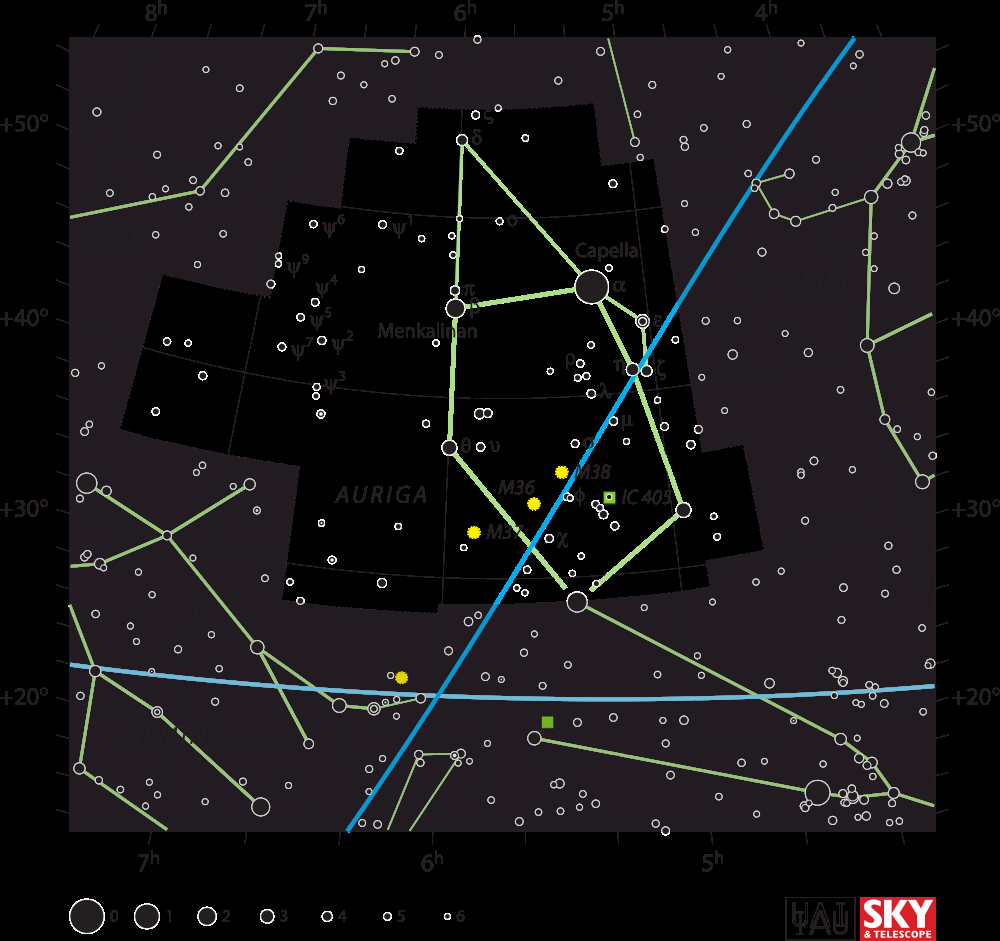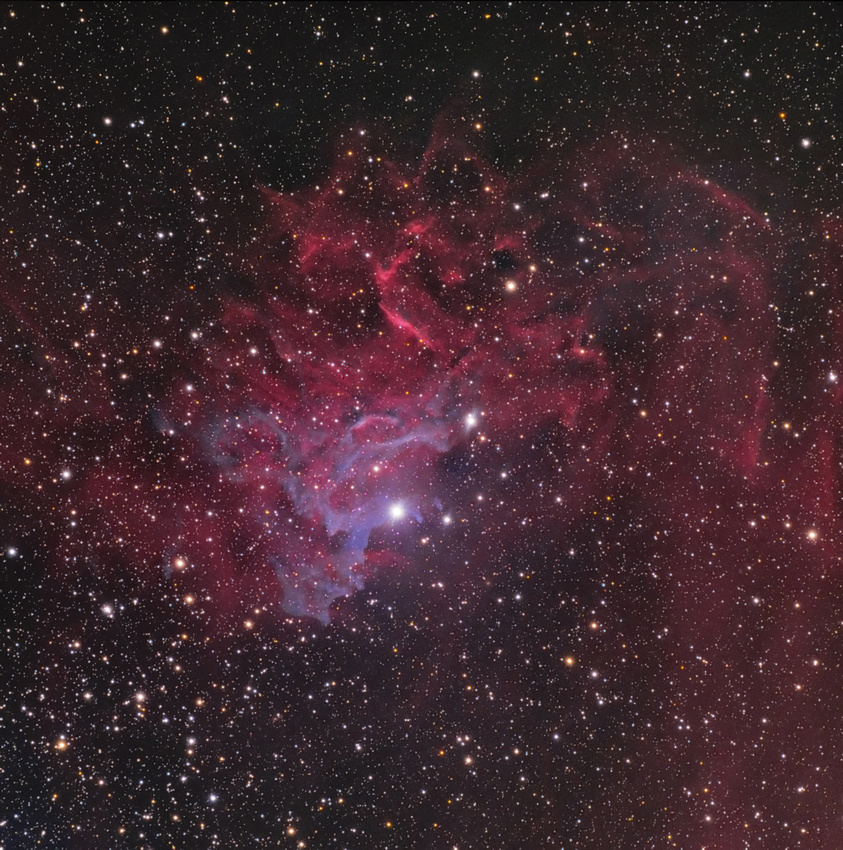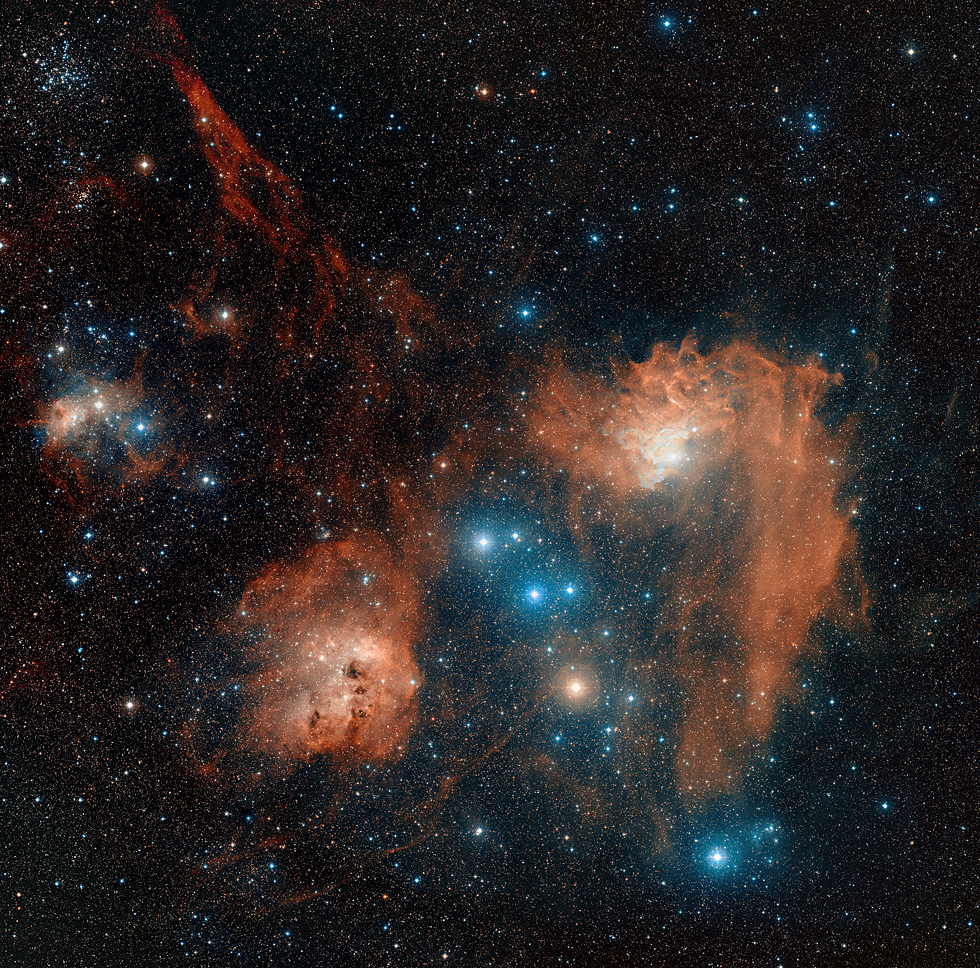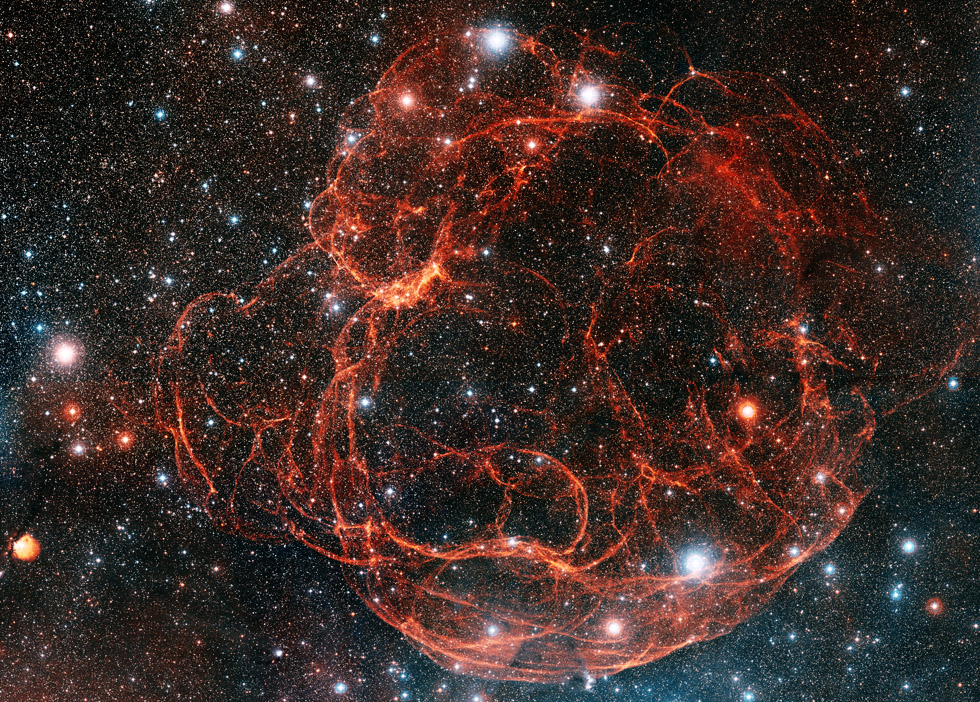
By IAU and Sky & Telescope magazine (Roger Sinnott & Rick Fienberg) [CC-BY-3.0], via Wikimedia Commons
"The Charioteer"

By IAU and Sky & Telescope magazine (Roger Sinnott & Rick Fienberg) [CC-BY-3.0], via Wikimedia Commons
Abbreviation: Aur
Genitive: Aurigae
Constellation family: Perseus
Nearest constellations: Camelopardalis, Gemini, Lynx,
Perseus, and Taurus
Right ascension: 6.00h
Declination: 41.73°
Visible between latitudes: +90° and -40°
Square degrees: 657
Luminary: Capella (Alpha Aurigae)
Named stars: Capella, Menkalinan
Notable deep sky objects: M38 (NGC 1912), M36 (NGC 1960), M37 (NGC 2099), IC 405 (Flaming Star Nebula), IC 410
Auriga is a constellation in the Northern Hemisphere that is visible during the month of February.
Auriga contains Capella, which is the third-brightest star in the Northern Hemisphere (after Arcturus from Boötes and Vega from Lyra) and the sixth-brightest star in the entire night sky.
Although it appears to the naked eye as a single object, Capella is a star system consisting of two sets of binary star systems. One set includes two yellow stars that are both 10 times the diameter of the Sun and separated by a distance only two-thirds the distance of the Earth from the Sun. The other set contains two smaller red dwarf stars.

By John Flamsteed [Public domain], via Wikimedia Commons
Along with Sirius (from Canis Major), Rigel (from Orion), Aldebaran (from Taurus), Pollux (from Gemini), and Procyon (from Canis Minor), Capella forms part of the Winter Hexagon, also called the Winter Circle. It is a group of bright stars visible in most regions of Earth from December to March.
Mythology related to Auriga varies considerably. Sometimes Auriga is considered as a symbol of a mythical figure of the same name; sometimes Auriga is described as representing Erichthonius, King of Athens, said to have developed the chariot.
Regardless of accompanying stories, Auriga is usually depicted as a male figure carrying a goat in one hand and the reins of a chariot in the other.
IC 405 (the Flaming Star Nebula):

By Hewholooks [CC-BY-SA-3.0], via Wikimedia Commons
IC 405 and IC 410 (emission nebulae):

By Davide de Martin via SkyFactory
Simeis 147 (a supernova remnant on the border of Auriga and Taurus, also called the Spaghetti Nebula):

By Davide de Martin via SkyFactory
NGC 1931 (nebula):

By Hewholooks [CC-BY-SA-3.0], via Wikimedia Commons